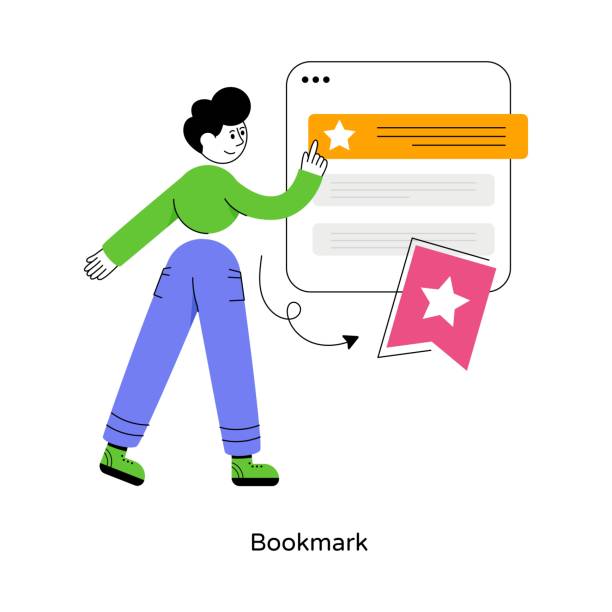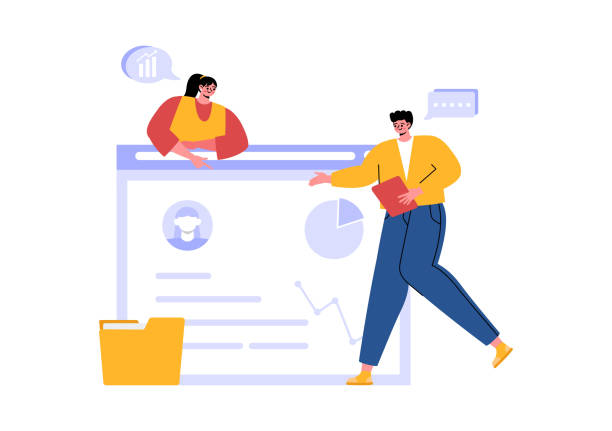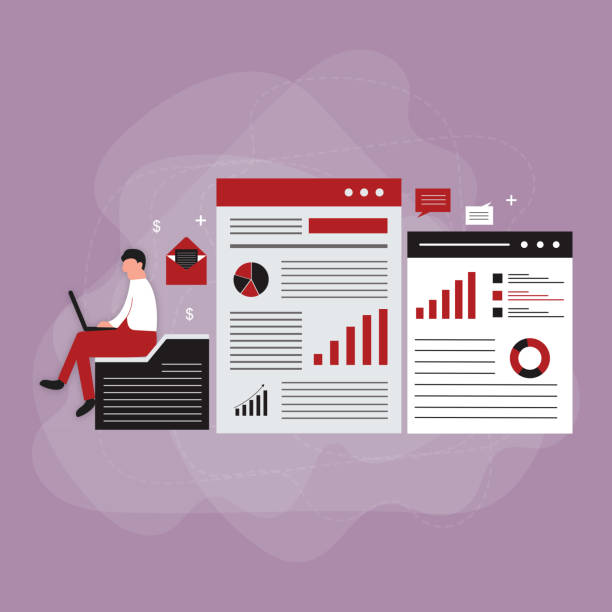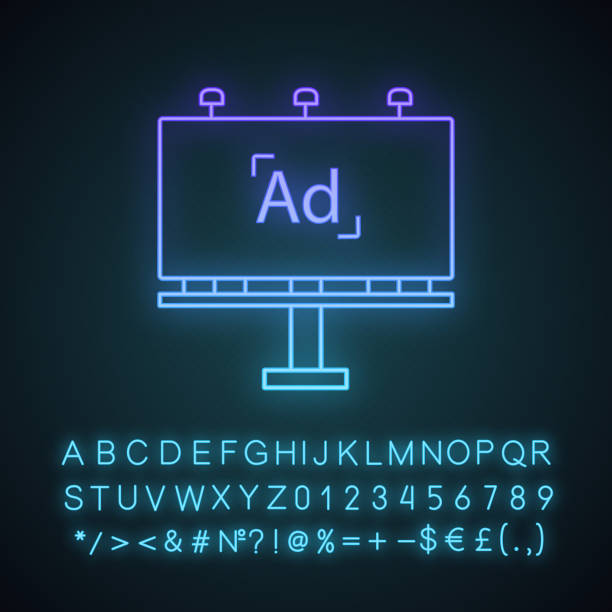Introduction to the Growing Need for International Websites

In the current era, where #internet has transcended geographical boundaries, having a powerful online presence is vital for any business.
But is this presence alone, with a single-language website, sufficient? The answer is no.
Today, given the cultural and linguistic diversity of users worldwide, multilingual website design is no longer a luxury option but a strategic necessity.
This approach allows you to connect with a wider audience, gain their trust, and ultimately, increase your market share globally.
The first step to entering international markets is to provide content that is understandable and relevant to local users.
This goes beyond simply translating words; it involves a deep understanding of cultural differences, local idioms, and even specific interests of each region.
The importance of multilingual website design extends beyond merely increasing traffic.
In fact, a website capable of displaying in multiple languages demonstrates your respect for international audiences and attention to their needs.
This approach not only leads to an improved user experience but also directly impacts the conversion rate and customer loyalty.
Studies have shown that users prefer to consume content in their native language, and this significantly aids their quicker and easier decision-making.
Therefore, for any business with a global vision, investing in the creation and development of a website with multilingual support is not just an expense, but a long-term and profitable investment.
This is a crucial step towards establishing a meaningful and effective online presence worldwide.
Don’t have a corporate website yet and are missing out on online opportunities? With professional corporate website design by Rasawp,
✅ Double your business credibility
✅ Attract new customers
⚡ Free consultation for your corporate website!
Undeniable Benefits of Multilingual Website Design for SEO and Global Access

In today’s competitive world, multilingual website design stands as one of the most powerful tools for improving SEO and expanding global reach.
When your website is available in multiple languages, search engines like Google, Bing, and Yandex can index your content for searches performed in different languages.
This means more users from around the world can find your website.
Proper use of hreflang tags, which inform search engines which version of a page is appropriate for which language and geographical region, plays a vital role in preventing duplicate content and improving global rankings.
Furthermore, a multilingual website allows you to target language-specific keywords.
This makes content optimization easier for local searches and directs more targeted traffic to your website.
Suppose you have a product with customers in Iran, Turkey, and Germany.
With a multilingual website design, you can optimize your content in Persian, Turkish, and German, and consequently appear in the search results of all three countries.
This strategy not only attracts more visitors but also enhances your brand’s credibility and trust internationally.
Ultimately, increased accessibility and improved SEO mean more business opportunities and sustainable growth in global markets.
Challenges and Technical Considerations in Implementing Multilingual Websites

Implementing a successful multilingual website design goes beyond merely translating content and requires careful consideration of technical aspects and potential challenges.
One of the most important decisions is choosing the appropriate URL structure: subdomains (e.g., fa.example.com), subfolders (e.g., example.com/fa/), or top-level domains (e.g., example.fa).
Each has its own advantages and disadvantages in terms of SEO and management.
Also, managing content for different languages, especially considering formatting, writing direction (like right-to-left for Persian), and special characters, requires a strong and flexible Content Management System (CMS).
Other technical challenges include managing images and videos for different languages, appropriate asset loading for each region (e.g., using a CDN close to the audience), and ensuring website code compatibility with all languages.
Also, page loading speed in different language versions and its optimization for international users is very important.
For instance, if your website is optimized for European users, it might not have high speed for Asian users.
These issues require careful planning and the use of appropriate technologies in multilingual website design.
Below is a table of the most important technical considerations in multilingual website design:
| Technical Consideration | Explanation |
|---|---|
| URL Structure | Subdomains, subfolders, or top-level domains for language separation. |
| Content Management System (CMS) | Support for multiple languages and easy translation management. |
| RTL/LTR Support | Compatibility with right-to-left text direction (such as Persian and Arabic) and left-to-right. |
| hreflang tag | Informing search engines about different language versions of pages. Google Source |
| UI String Translation | Accurate translation of buttons, forms, error messages, and other user interface elements. |
| Loading Speed and CDN | Optimizing speed for users in different geographical regions using Content Delivery Networks. |
Choosing the Right Content Management System for a Multilingual Website

One of the most important decisions in the journey of multilingual website design is choosing a powerful and suitable Content Management System (CMS).
An ideal CMS should provide easy management of multiple languages, offer content translation in an organized manner, and technically be compatible with international SEO tools.
Platforms like WordPress with plugins such as WPML or Polylang, Drupal with native multilingual capabilities, and Joomla are popular options, each with its own features and complexities.
The correct CMS choice depends on project requirements, budget, and the development team’s expertise.
WordPress is a popular choice due to its ease of use and extensive plugin ecosystem, but for very large and complex projects, it might require deeper customizations.
Drupal, with its stronger native multilingual management capabilities and high scalability, is more suitable for corporate websites and larger projects.
Joomla also offers a balance between ease of use and advanced features.
Beyond these common platforms, custom or Headless CMS systems also exist, providing high flexibility in delivering content in different languages across various platforms.
The right choice at this stage will significantly impact the development and maintenance process of your website in the future and greatly contribute to the success of your multilingual website design project.
Does your company’s website perform as it should for your brand? In today’s competitive world, your website is your most important online tool. Rasawp, specializing in professional corporate website design, helps you to:
✅ Gain customer credibility and trust
✅ Convert website visitors into customers
⚡ Get a free consultation!
The Importance of User Experience (UX) and Localization Beyond Translation

In the process of multilingual website design, merely translating words is not enough; localization and attention to User Experience (UX) in each language and geographical region are of utmost importance.
Localization involves adapting website content and design to the culture, values, habits, and expectations of local audiences.
This can include date and time formats, currency, phone numbers, addresses, colors, and even image selection.
For example, an image that has a positive meaning in one culture might cause misunderstanding in another.
Attention to UX in multilingual website design means that every user, regardless of their language, should be able to easily navigate the website and access the information they need.
This includes designing the user interface (UI) to be compatible with text direction (such as right-to-left for Persian and Arabic), font sizes, and even element layout.
Also, providing a clear and accessible language selection option for users is among the key points in improving UX.
A well-localized website that offers a good user experience not only gains the trust of local audiences but also leads to increased engagement and reduced bounce rate.
This depth in attention to detail ensures the ultimate success of a multilingual website.
International SEO Strategies for Success in Global Markets

Success in international SEO requires smart strategies that go beyond merely translating content in multilingual website design.
The first step is keyword research for each language and geographical region.
Keywords that are effective in one language or country may have a different meaning or not be searched for at all in another.
Using local keyword research tools to identify the vocabulary and phrases used by local audiences is crucial.
Furthermore, proper use of hreflang tags is one of the most important aspects of international SEO.
These tags help search engines display the correct version of the page based on the user’s language and geographical region, prevent duplicate content issues, and improve website rankings.
The appropriate URL structure, as mentioned earlier (subfolders, subdomains, or top-level domains), also plays an important role in SEO and must be chosen carefully.
Additionally, attention must be paid to acquiring backlinks from reputable and relevant websites in each country or language region.
These backlinks increase your website’s authority in those regions.
Optimizing website speed for each region, using local servers or CDNs, and ensuring mobile compatibility in all languages are other key factors in the success of an international SEO project for multilingual website design.
This comprehensive approach prepares your website for global competition.
Testing, Maintenance, and Continuous Optimization of Multilingual Websites

After the multilingual website design process is completed and launched, the work is not over.
In fact, the stage of testing, maintenance, and continuous optimization is of particular importance.
Testing should include checking all language versions for translation accuracy, correct display of User Interface (UI) elements in different directions (RTL/LTR), and proper functionality of all links and forms.
Localization teams or native speakers play a vital role in this stage to ensure the correctness and naturalness of the content in each language.
Maintenance includes regular content updates, fixing potential errors, and ensuring website compatibility with new browser versions and devices.
In a multilingual website, this process becomes more complex because every update or change must be applied and reviewed across all language versions.
Continuous optimization also means analyzing traffic data and user behavior for each language.
Which pages are more popular? Which language has a higher bounce rate? These analyses help you improve your content and SEO strategies for each region and increase the overall efficiency of your multilingual website design.
This is a continuous cycle of improvement that helps your website remain competitive in global markets.
The table below shows some important points in continuous maintenance and optimization:
| Activity | Description |
|---|---|
| Translation Review | Periodic review of translation accuracy and quality by native speakers. |
| Functional Testing | Ensuring correct functionality of forms, links, and website features in all languages. |
| Content Updates | Creating and updating new content for all language versions simultaneously. |
| SEO Monitoring | Tracking keyword rankings, organic traffic, and crawl errors in each language. |
| User Behavior Analysis | Using tools like Google Analytics to understand user behavior in each language version. |
| Speed Optimization | Continuously reviewing and improving loading speed for international users. |
Common Mistakes in Multilingual Website Design and Solutions to Avoid Them

Although multilingual website design offers numerous benefits, there are also common mistakes along this path that can lead to project failure.
One of the biggest mistakes is merely literal translation of content without considering localization.
This can lead to unnatural content, misunderstandings, and loss of original meaning.
The solution is to use native-speaking translators who are experts in your field, and not only translate but also localize the content.
Another mistake is neglecting international SEO.
Many businesses forget that keywords and SEO strategies must be optimized separately for each language and geographical region.
Failure to use hreflang tags, or their incorrect use, can lead to SEO penalties and low traffic.
Also, not choosing a suitable CMS that supports multilingualism can create many problems in website management and maintenance in the future.
Technical issues such as lack of support for right-to-left (RTL) text direction, slow page loading for users from distant regions, and lack of mobile compatibility are also among these mistakes.
With precise planning, hiring an expert team, and attention to detail, these mistakes can be avoided in the path of multilingual website design, leading to a successful global website.
Do you dream of a thriving online store but don’t know where to start?
Rasawp is your comprehensive e-commerce website design solution.
✅ Attractive and user-friendly design
✅ Increased sales and revenue⚡ Get a free consultation
The Future of the Global Web and the Role of Artificial Intelligence in Translation and Localization

With astonishing advancements in Artificial Intelligence (AI) and Machine Learning, the future of multilingual website design and localization is undergoing a transformation.
Neural Machine Translation (NMT) tools like Google Translate and DeepL are becoming increasingly accurate and natural, and can be used as powerful auxiliary tools in the initial translation process.
These technologies can quickly translate large volumes of content, which is particularly useful for websites with dynamic and news-oriented content.
But can AI completely replace human translators? Currently, the answer is no.
While AI performs very well in translating direct phrases, it still has limitations in understanding cultural nuances, humor, sarcasm, and tone.
For this reason, a hybrid approach, where initial translation is done by AI and then reviewed and localized by human translators, is considered the best solution.
This approach combines speed with human accuracy and quality.
Furthermore, AI can play a significant role in automatic localization of user interface elements, suggesting local keywords, and even personalizing the user experience based on language and geographical region.
These advancements will make the multilingual website design process much more efficient and accessible in the future.
Conclusion: A Vision for Success in International Markets

As explored in this article, multilingual website design is no longer an option but a strategic necessity for any business aiming for success in global markets.
This approach not only plays a vital role in increasing reach and improving SEO, but also by creating a localized user experience, it gains the trust and loyalty of customers worldwide.
From choosing the appropriate URL structure and a powerful CMS to paying attention to localization nuances and international SEO strategies, every stage of this process requires precise planning and professional execution.
By avoiding common mistakes and leveraging emerging technologies like Artificial Intelligence in the translation and localization process, one can build a website that is not only technically flawless but also culturally connects with audiences in each region.
Investing in professional multilingual website design means opening doors to new opportunities, increasing sales, and solidifying your brand’s position as a key player in the international arena.
Ultimately, by embarking on this path, your business will not only transcend boundaries but will also capture the hearts and minds of customers worldwide.
Frequently Asked Questions
| Question | Answer |
|---|---|
| What is a multilingual website? | It is a website whose content is available to users in several different languages. |
| Why should we design a multilingual website? | To expand reach to international audiences, increase website traffic, improve SEO in target markets, and provide a better user experience for non-Persian speaking users. |
| What are the main methods for implementing a multilingual website? | Using subdomains (e.g., en.mysite.com), using subdirectories (e.g., mysite.com/en/), and using separate domains for each language (e.g., mysite.com and mysite.de). |
| Which implementation method is better for SEO? | Generally, using subdirectories (language folders) is often recommended due to the transfer of main domain authority to other languages. |
| What is the Hreflang tag and what is its use? | It is an HTML tag or HTTP Header that tells search engines which version of a page is suitable for which language or geographical region. This tag prevents Duplicate Content and improves SEO. |
| How is a Language Switcher designed? | Usually by using a dropdown menu, button, or flag in the website’s header or footer, which allows the user to select their preferred language. |
| Is automatic (machine) translation suitable for a multilingual site? | No, machine translation usually has low quality and many errors that can harm the site’s credibility. Human translation or a combination of human translation and machine editing is recommended. |
| What are the most important SEO tips in multilingual website design? | Correct use of Hreflang tags, having an appropriate URL structure for each language, translating titles and meta descriptions, translating main content, and internal linking between related language versions. |
| Should all website content be translated? | It depends on the strategy. Usually, the main and important content of the site should be translated. Less important sections or blogs may not require full translation. |
| What are the main challenges in multilingual website design? | Content management in different languages, translation costs, technical issues related to URLs and language tags, template compatibility with right-to-left (RTL) languages like Persian and Arabic, and multilingual SEO management. |
And other services of Rasawp Advertising Agency in the field of advertising
Smart Reportage: A creative platform for improving customer acquisition with Google Ads management.
Smart Advertising Campaign: A fast and efficient solution for customer acquisition focusing on Google Ads management.
Smart Customer Journey Map: A quick and efficient solution for increasing website traffic focusing on optimizing key pages.
Smart Data Analysis: A combination of creativity and technology for online growth through Google Ads management.
Smart Custom Software: Designed for businesses seeking to analyze customer behavior through optimizing key pages.
And over hundreds of other services in the field of internet advertising, advertising consultation, and organizational solutions
Internet Advertising | Advertising Strategy | Advertorials
Sources
Benefits of Multilingual Website Design for Businesses
Step-by-Step Guide to Multilingual Website Design
The Importance of Multilingual Website SEO in Increasing Traffic
How a Multilingual Website Can Increase Your Global Reach?
? Ready to take your business to the top in the digital world? Rasawp Afarin Digital Marketing Agency, with its expert and creative team, is always by your side to pave your path to success with innovative strategies and comprehensive services. From SEO and optimization to professional e-commerce website design, we are here to turn your digital dreams into reality.
📍 Tehran, Mirdamad Street, next to Central Bank, Southern Kazeroun Alley, Ramin Alley, No. 6



